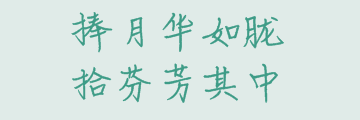[C++ STL] vector使用详解
一、概述
vector(向量): 是一种序列式容器,事实上和数组差不多,但它比数组更优越。一般来说数组不能动态拓展,因此在程序运行的时候不是浪费内存,就是造成越界。而vector正好弥补了这个缺陷,它的特征是相当于可分配拓展的数组(动态数组),它的随机访问快,在中间插入和删除慢,但在末端插入和删除快。
二、定义及初始化
使用之前必须加相应容器的头文件:
#include <vector> // vector属于std命名域的,因此需要通过命名限定,例如using std::vector;
定义的实现代码如下:
vector<int> a; // 定义一个int类型的向量a
vector<int> a(10); // 定义一个int类型的向量a,并设置初始大小为10
vector<int> a(10, 1); // 定义一个int类型的向量a,并设置初始大小为10且初始值都为1
vector<int> b(a); // 定义并用向量a初始化向量b
vector<int> b(a.begin(), a.begin()+3); // 将a向量中从第0个到第2个(共3个)作为向量b的初始值
除此之外,还可以直接使用数组来初始化向量:
int n[] = {1, 2, 3, 4, 5} ;
// 将数组n的前5个元素作为向量a的初值
// 说明:当然不包括arr[4]元素,末尾指针都是指结束元素的下一个元素,
// 这个主要是为了和vec.end()指针统一。
vector<int> a(n, n+5) ;
vector<int> a(&n[1], &n[4]) ; // 将n[1]、n[2]、n[3]作为向量a的初值
三、基本操作函数
3.1 容量函数
- 容器大小:
vec.size(); - 容器容量:
vec.capacity();// 指在发生 realloc 前能允许的最大元素数,即预分配的内存空间,与 size() 不同 - 容器最大容量:
vec.max_size(); - 更改容器大小:
vec.resize(); - 容器判空:
vec.empty();
#include <iostream>
#include <vector>
using namespace std;
int main(int argc, char* argv[])
{
vector<int> vec;
for (int i = 0; i<6; i++)
{
vec.push_back(i);
}
cout << vec.size() << endl; // 输出:6
cout << vec.capacity() << endl; // 输出:6
cout << vec.max_size() << endl; // 输出:1073741823
vec.resize(0);
cout << vec.size() << endl; // 输出:0
if (vec.empty())
cout << "元素为空" << endl; // 输出:元素为空
return 0;
}
注意:vec.resize(10),会分配 10 个 0 给vec,相当于 push_back(0) 10 次。
3.2 添加函数
- 末尾添加元素:
vec.push_back(const T& x); - 任意位置插入一个元素:
vec.insert(iterator it, const T& x); - 任意位置插入 n 个相同元素:
vec.insert(iterator it, int n, const T& x); - 插入另一个向量的 [forst,last] 间的数据:
vec.insert(iterator it, iterator first, iterator last);
#include <iostream>
#include <vector>
using namespace std;
int main(int argc, char* argv[])
{
vector<int> vec;
// 末尾添加元素
vec.push_back(5);
// 任意位置插入一个元素
vector<int>::iterator it = vec.begin();
vec.insert(it, 2);
// 任意位置插入n个相同元素
it = vec.begin();
vec.insert(it, 3, 9);
// 插入另一个向量的[forst,last]间的数据
vector<int> vec2(5, 8);
it = vec.begin();
vec.insert(it, vec2.end() - 1, vec2.end());
// 遍历显示
for (it = vec.begin(); it != vec.end(); it++)
cout << *it << " "; // 输出:8 9 9 9 2 5
cout << endl;
return 0;
}
3.3 删除函数
- 末尾删除元素:
vec.pop_back(); - 任意位置删除一个元素:
vec.erase(iterator it); - 删除 [first,last] 之间的元素:
vec.erase(iterator first, iterator last); - 清空所有元素:
vec.clear();
#include <iostream>
#include <vector>
using namespace std;
int main(int argc, char* argv[])
{
vector<int> vec;
for (int i = 0; i < 8; i++)
vec.push_back(i);
// 末尾删除元素
vec.pop_back();
// 任意位置删除一个元素
vector<int>::iterator it = vec.begin();
vec.erase(it);
// 删除[first,last]之间的元素
vec.erase(vec.begin(), vec.begin() + 1);
for (it = vec.begin(); it != vec.end(); it++)
cout << *it << " ";
cout << endl;
// 清空所有元素
vec.clear();
// 遍历显示
for (it = vec.begin(); it != vec.end(); it++)
cout << *it << " "; // 输出:2 3 4 5 6
cout << endl;
return 0;
}
3.4 访问函数
- 下标访问:
vec[1];// 并不会检查是否越界 - at 方法访问:
vec.at(1);// 以上两者的区别就是 at 会检查是否越界,是则抛出 out of range 异常 - 访问第一个元素:
vec.front(); - 访问最后一个元素:
vec.back(); - 返回一个指针:
int* p = vec.data();// 可行的原因在于 vector 在内存中就是一个连续存储的数组,所以可以返回一个指针指向这个数组。这是是 C++11 的特性。
#include "stdafx.h"
#include <iostream>
#include <vector>
using namespace std;
int main(int argc, char* argv[])
{
vector<int> vec;
for (int i = 0; i < 6; i++)
vec.push_back(i);
// 下标访问
cout << vec[0] << endl; // 输出:0
// at方法访问
cout << vec.at(0) << endl; // 输出:0
// 访问第一个元素
cout << vec.front() << endl; // 输出:0
// 访问最后一个元素
cout << vec.back() << endl; // 输出:5
// 返回一个指针
int *p = vec.data();
cout << *p <<endl; // 输出:0
return 0;
}
3.5 其他函数
- 多个元素赋值:
vec.assign(int nSize, const T& x);// 类似于初始化时用数组进行赋值 - 交换两个同类型容器的元素:
swap(vector&);
#include <iostream>
#include <vector>
using namespace std;
int main(int argc, char* argv[])
{
// 多个元素赋值
vector<int> vec;
vec.assign(3, 1);
vector<int> vec2;
vec2.assign(3, 2);
// 交换两个容器的元素
vec.swap(vec2);
// 遍历显示
cout << "vec: ";
for (int i = 0; i < vec.size(); i++)
cout << vec[i] << " "; // 输出:2 2 2
cout << endl;
// 遍历显示
cout << "vec2: ";
for (int i = 0; i < vec2.size(); i++)
cout << vec2[i] << " "; // 输出:1 1 1
cout << endl;
return 0;
}
四、迭代器与算法
1. 迭代器
- 开始指针:
vec.begin(); - 末尾指针:
vec.end();// 指向最后一个元素的下一个位置 - 指向常量的开始指针:
vec.cbegin();// 意思就是不能通过这个指针来修改所指的内容,但还是可以通过其他方式修改的,而且指针也是可以移动的。 - 指向常量的末尾指针:
vec.cend();
#include <iostream>
#include <vector>
using namespace std;
int main(int argc, char* argv[])
{
vector<int> vec;
vec.push_back(1);
vec.push_back(2);
vec.push_back(3);
cout << *(vec.begin()) << endl; // 输出:1
cout << *(--vec.end()) << endl; // 输出:3
cout << *(vec.cbegin()) << endl; // 输出:1
cout << *(--vec.cend()) << endl; // 输出:3
cout << *(vec.rbegin()) << endl; // 输出:3
cout << *(--vec.rend()) << endl; // 输出:1
cout << endl;
return 0;
}
2. 算法
- 遍历元素
vector<int>::iterator it;
for (it = vec.begin(); it != vec.end(); it++)
cout << *it << endl;
// 或者
for (int i = 0; i < vec.size(); i++) {
cout << vec.at(i) << endl;
}
- 元素翻转
#include <algorithm>
reverse(vec.begin(), vec.end());
- 元素排序
#include <algorithm>
sort(vec.begin(), vec.end()); // 采用的是从小到大的排序
// 如果想从大到小排序,可以采用先排序后反转的方式,也可以采用下面方法:
// 自定义从大到小的比较器,用来改变排序方式
bool Comp(const int& a, const int& b)
{
return a > b;
}
sort(vec.begin(), vec.end(), Comp);
参考:
[清水汪汪-博客园博客](https:// www.cnblogs.com/zhonghuasong/p/5975979.html)






【推荐】编程新体验,更懂你的AI,立即体验豆包MarsCode编程助手
【推荐】凌霞软件回馈社区,博客园 & 1Panel & Halo 联合会员上线
【推荐】抖音旗下AI助手豆包,你的智能百科全书,全免费不限次数
【推荐】博客园社区专享云产品让利特惠,阿里云新客6.5折上折
【推荐】轻量又高性能的 SSH 工具 IShell:AI 加持,快人一步
· 没有源码,如何修改代码逻辑?
· 一个奇形怪状的面试题:Bean中的CHM要不要加volatile?
· [.NET]调用本地 Deepseek 模型
· 一个费力不讨好的项目,让我损失了近一半的绩效!
· .NET Core 托管堆内存泄露/CPU异常的常见思路
· 微软正式发布.NET 10 Preview 1:开启下一代开发框架新篇章
· 没有源码,如何修改代码逻辑?
· NetPad:一个.NET开源、跨平台的C#编辑器
· PowerShell开发游戏 · 打蜜蜂
· 凌晨三点救火实录:Java内存泄漏的七个神坑,你至少踩过三个!